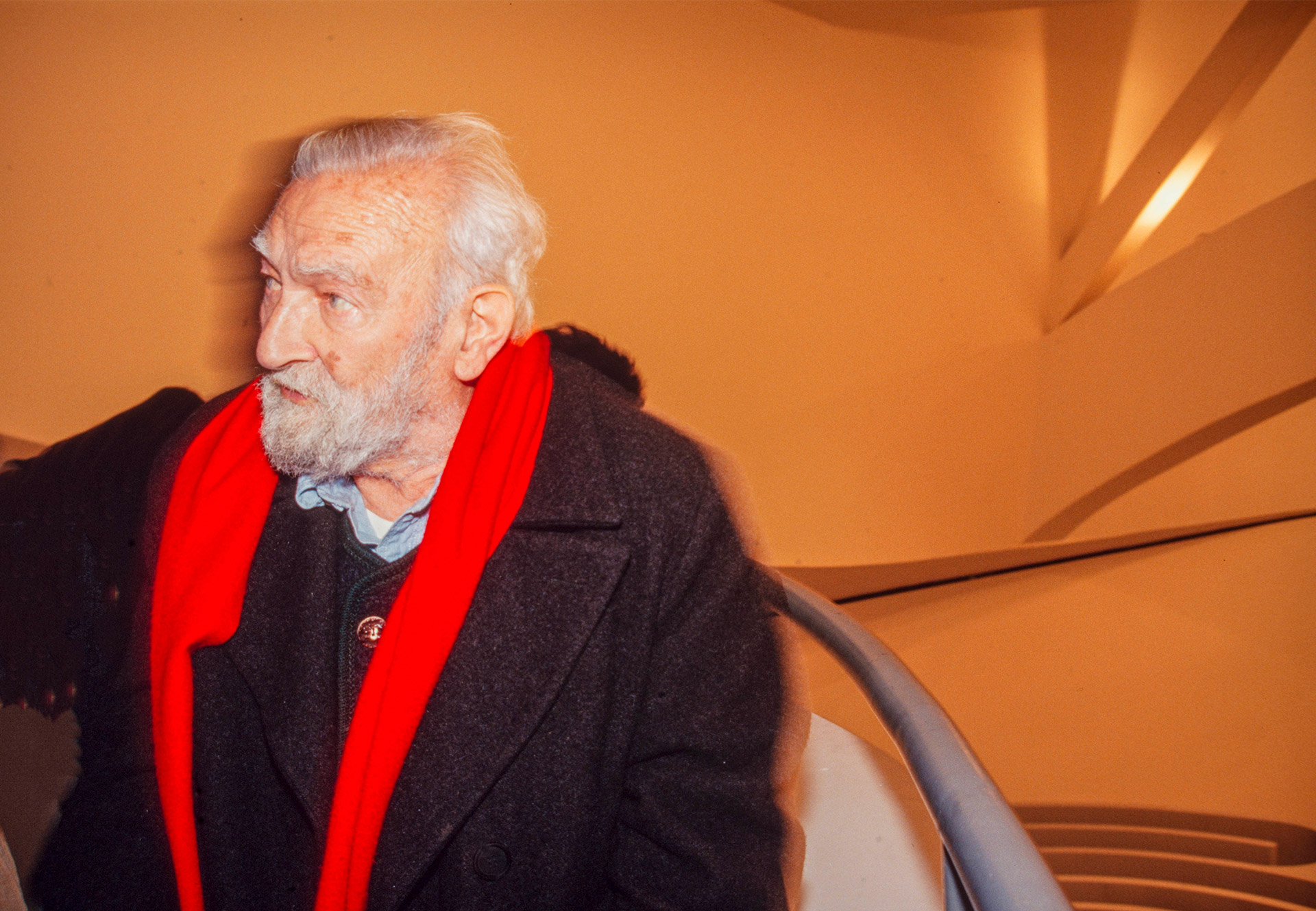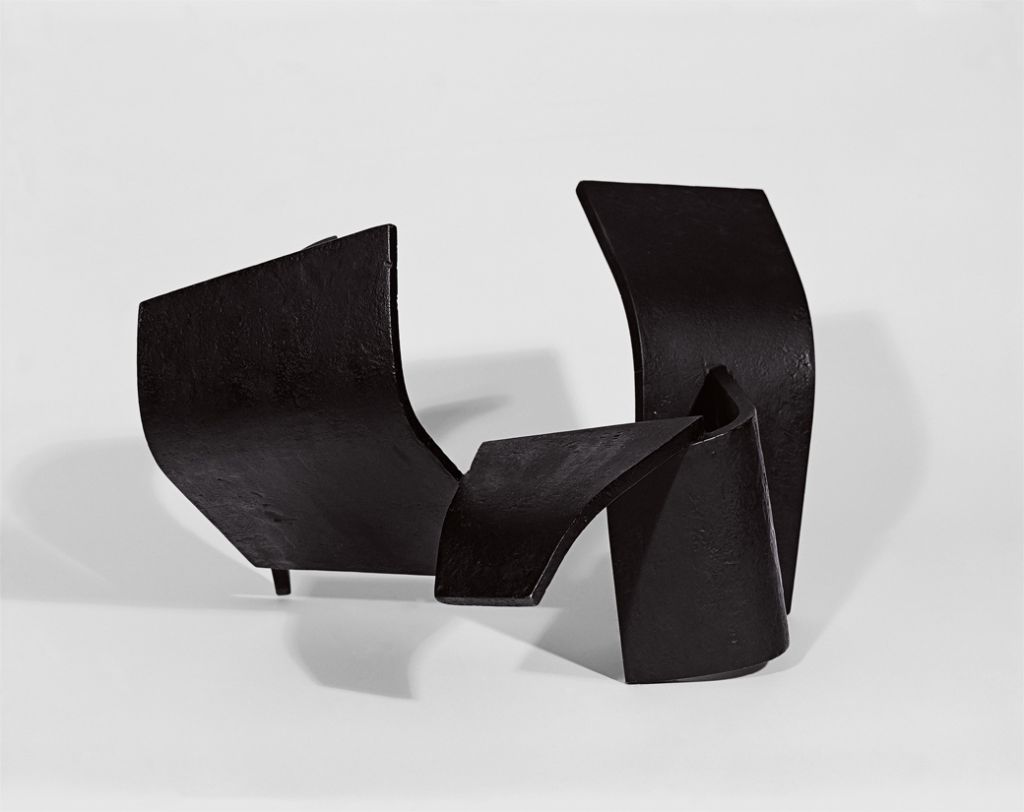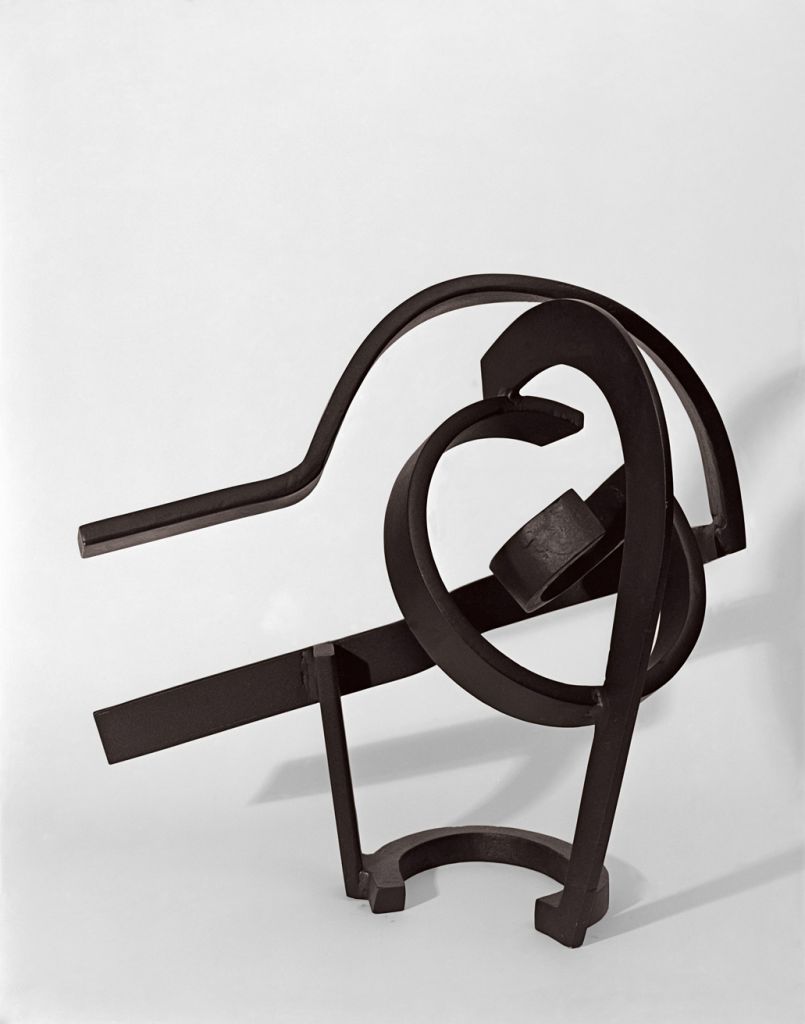Oteiza, Jorge
Orio, Spain, 1908 | San Sebastián, Spain, 2003

19
08
Born on October 21.
27
Moves to Madrid. Wishes to study architecture, but for bureaucratic reasons must enroll in medicine instead.
28
Creates his first sculptures.
29
Drops out of studying medicine and enrolls for a short time at the Escuela de Artes y Oficios in Madrid.
31
Receives first prize in the IX Certamen de Artistas Noveles Guipuzcoanos in San Sebastián.
32
Takes part in a group exhibition of young artists at the Museo de San Telmo in San Sebastián.
33
Wins first prize in the X Certamen de Artistas Noveles de Guipúzcoa in San Sebastián.
35
Travels to South America and settles in Buenos Aires. Takes part in a group exhibition at Galería Witcomb in Buenos Aires. Displays his work at the Academia de Bellas Artes at the Universidad de Santiago de Chile. Meets poet Vicente Huidobro.
36
Helps create experimental political theater in Santiago de Chile.
38
Marries Itziar Carreño.
41
Teaches at the Escuela Nacional de Cerámica in Buenos Aires.
47
Named an honorary member for scientific research by the Universidad Nacional de Trujillo in Trujillo, Peru. Publishes the article “Informe sobre mi escultura” in the Buenos Aires magazine Cabalgata.
48
Moves to Bilbao.
50
Commissioned to create statuary for the Basílica Nuestra Señora in Aránzazu, Spain. The project will be put on hold for many years when the proposed decorations are rejected by the diocese. The statuary will finally be installed in 1969.
51
Receives an honorary diploma at the IX Triennale in Milan for his sculpture Ensayo sobre lo simultáneo.
52
Presents his Monumento al prisionero político desconocido at the International Competition of the Institute of Contemporary Arts in London, the only Spaniard to take part. The book Interpretación de la estatuaria de la megalítica americana is published by Editorial Cultura Hispánica in Madrid.
53
Participates in the group exhibition Arte fantástico at Galería Clan in Madrid.
54
Receives the Premio Nacional de Arquitectura for his project for the chapel of the Camino de Santiago.
57
Takes part in the IV Bienal do Museu de Arte Moderna de São Paulo, where he receives the International Grand Prize for Sculpture. Publishes, for the Bienal de São Paulo, the catalogue Propósito experimental 56-57. Helps found the artists’ group Equipo 57, but soon disassociates himself from the group.
58
Moves to Irun, Spain. Exhibits at Gres Gallery in Washington, D.C. Creates Conclusión Experimental n.º 1 and Conclusión Experimental n.º 2 and Desocupación de la esfera.
59
The proposed Monumento a Batlle, a collaborative project with architect Roberto Puig, receives an award at the Concurso Internacional sobre Monumentalidad e Integración de Escultura con Arquitectura y Ciudad in Montevideo, Uruguay. Creates Homenaje a Mallarmé and Conclusión experimental nº 3. Decides to abandon his practice as a sculptor after creating the latter.
60
Exhibits at Galería Neblí in Madrid and the Sala Teka in Bilbao with Néstor Basterretxea. Oteiza’s essay “El final del arte contemporáneo,” in which he expounds on his reasons for giving up sculpture, is published in J. Oteiza y N. Basterrechea (Madrid: Galería Neblí, 1960). Oteiza’s work is featured in the exhibition New Spanish Painting and Sculpture at the Museum of Modern Art in New York.
63
Publishes the book Quousque tandem…! Ensayo de interpretación estética del alma vasca (San Sebastián: Auñamendi, 1963).
65
The film Acteón, with a screenplay by Oteiza, premieres.
66
Founds the group GAUR with Amable Arias, Rafael Ruiz Balerdi, Nestor Basterretxea, Eduardo Chillida, Remigio Mendiburu, José Antonio Sistiaga, and José Luis Zumeta.
68
The magazine Nueva forma publishes the monograph Oteiza, 1933-68, with an epilogue by Oteiza titled “Estética del huevo: Mentalidad vasca y laberinto.”
70
Creates Estela a Madoz, which is installed in Zarauz, Spain.
72
Resumes work on his incomplete pieces and begins working on Laboratorio de tizas.
73
Oteiza’s sculptures for Aránzazu are shown at Galería Múltiple in Madrid.
74
Exhibits at Galería Txantxangorri in Fuenterrabía, Spain.
76
Participates in the XXXVII Biennale di Venezia.
79
Takes part in Arte español contemporáneo at the Fundación Juan March in Madrid.
81
In August, publishes “Falsificación con cultura vasca, artistas, vascofonía, universidad: A un periodista, puntualizaciones que sirven para gobernantes” in the Bilbao newspaper Muga.
83
Publishes the book Ejercicios espirituales en un túnel: En busca y encuentro de nuestra identidad perdida (San Sebastián: Hordago, 1983).
84
Receives the Premio Extraordinario from the magazine Euzkadi.
85
Receives the Medalla de Oro al Mérito en las Bellas Artes from the Spanish Ministry of Culture.
86
Oteiza’s work is featured in Qu’est-ce que la sculpture moderne? 1900-1970 at the Musée National d’Art Moderne, Centre Georges Pompidou in Paris.
87
Participates in the exhibition Cinq siècles d’art espagnol: Le siècle de Picasso at the Musée d’Art Moderne de la Ville de Paris.
88
The exhibition Jorge Oteiza: Propósito experimental is held at the Fundación Caja de Pensiones in Madrid and later travels to the Museo de Bellas Artes in Bilbao and the Fundació “la Caixa” in Barcelona. Represents Spain at the XLIII Biennale di Venezia, together with Susana Solano. Receives the Premio Príncipe de Asturias for the arts from the Fundación Príncipe de Asturias.
90
Publishes the poetry collections Existe Dios al noroeste and La ley de los cambios
91
Publishes El libro de los plagios, in which he accuses Eduardo Chillida of plagiarism.
92
Exhibits at Galería Tristán in Barcelona. Publishes Itziar, elegía y otros poemas, written following the death of his wife in 1991. Oteiza’s Odiseo is installed at the Parque de la Ciudadela in Pamplona. Receives the Medalla de Oro from the province of Navarre. Establishes the Fundación Jorge Oteiza.
95
Publishes Estética del huevo: Huevo y laberinto, Mentalidad vasca y laberinto. Receives the Manuel Lekuona prize from the Eusko Ikaskuntza (Basque Studies Society). Oteiza’s La tierra y la luna is installed in the cloister of the Universidad de Oñate in Oñate, Spain. 1996 Receives the Pevsner Association Award.
97
Publishes Goya mañana: El realismo inmóvil, El Greco, Goya, Picasso.
98
Receives, together with the Orfeón Donostiarra, the Premio Vasco Universal. Oteiza’s Ola is installed in the foyer of the Museu d’Art Contemporani de Barcelona. The Universidad del País Vasco awards Oteiza an honorary doctorate. Wins an award from the Círculo de Bellas Artes in Madrid.
00
The Sala Kubo del Palacio Kursaal in San Sebastián presents a comprehensive exhibition of Oteiza’s work. Exhibits at the Sala García Castañón in Pamplona and the Castillo de Santa Bárbara in Alicante, Spain.
02
Oteiza’s Variante ovoide de la desocupación de la esfera is installed opposite Bilbao’s town hall. Receives an honorary doctorate in fine arts from the Universitat de Barcelona. Announces the opening of the Fundación Museo Jorge Oteiza Fundazio Museoa in Alzuza, in Navarre.
03
Dies on April 9.





